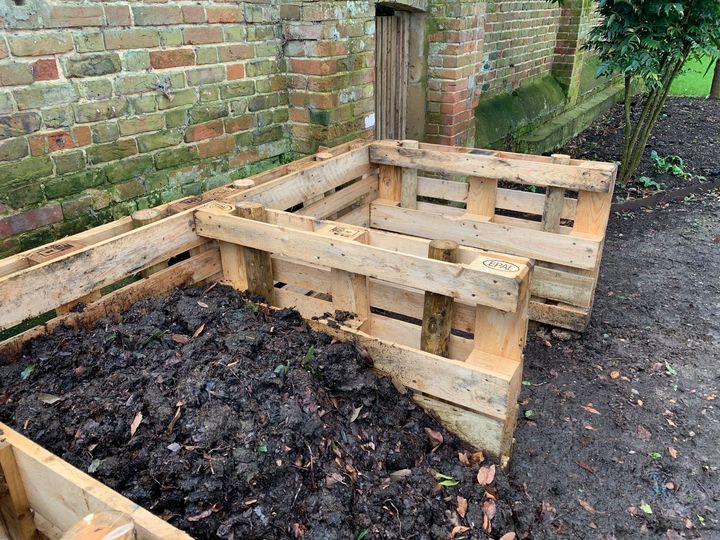Embracing the Bounty of Autumn: Composting Garden Leaves, with a Focus on Oak Leaves

As autumn graces our gardens with a carpet of golden and amber hues, oak trees generously bestow their leaves, creating a lush tapestry of nature’s bounty. These iconic oak leaves, renowned for their high tannin content and characteristic acidity, present a unique challenge in the composting process. However, with a strategic approach and the right ingredients, transforming these golden treasures into nutrient-rich compost for your garden is entirely achievable.
Quick Notes on composting garden leaves
- You could create a number of smaller compost heaps around the garden using old builders pallets to save time ( see picture )
- When composting leaves mix with some other organic matter such as horse manure or lawn clippings
- Add some garden lime and growmore fertiliser as you build up the layers of compost
- Water to keep the compost moist
- Add a few composting works
- In the early winter cover with old carpet to sheeting to help keep the heat in over winter speeding up the composting bacteria
- When creating a new compost heap save or move some of the old compost to transfer the bacteria etc to the new compost
The Oak Leaf Conundrum
Oak leaves, owing to their tannin-rich composition, can be somewhat resistant to the composting process. Tannins, natural compounds within the leaves, can impede decomposition, making oak leaves a more robust material to break down in a compost pile. Without intervention, they may require an extended period to fully decompose.
Essential Ingredients for Success
Grass Clippings: When dealing with oak leaves, incorporating grass clippings is pivotal. They introduce a healthy dose of nitrogen, striking a balance with the carbon-rich leaves. This accelerates decomposition, ensuring a more harmonised compost.
Garden Lime: Given the inherent acidity of oak leaves, the addition of garden lime is invaluable. Lime helps neutralise the acidity, creating an environment conducive to the microorganisms responsible for decomposition. This expedites the breakdown of the leaves.
Growmore Fertilizer: A balanced fertiliser, like Growmore, supplies essential nutrients that support the activity of composting microbes. It complements the composting process, guaranteeing that the resulting compost is nutrient-rich and beneficial for your plants.
Composting Worms: Introducing composting worms, such as red wigglers, can significantly bolster the composting process. These diligent workers excel at breaking down tough materials like oak leaves, and their castings infuse valuable nutrients into the compost.
Navigating the Composting Journey
Layering: To initiate a well-rounded compost pile, alternate the oak leaves with grass clippings, aiming for a rough 75/25 ratio of brown (carbon-rich) to green (nitrogen-rich) materials.
Incorporating Lime and Fertilizer: As you build your compost pile, sprinkle garden lime and Growmore Fertilizer in moderate amounts. These additions will counteract acidity and supply vital nutrients for the microorganisms.
Introducing Composting Worms: Introduce a thriving population of composting worms into your pile. These diligent creatures will tirelessly break down the oak leaves and other organic matter.
Monitoring Moisture Levels: Ensure that your compost pile maintains proper moisture levels, akin to a wrung-out sponge. Excessively dry piles will slow decomposition, while overly damp piles can turn anaerobic and emit unpleasant odours.
Exercising Patience and Observation
Composting oak leaves demands patience. Due to their tannin content, they may take longer to decompose compared to other materials. Regularly monitor the pile for progress. As the leaves break down, they will metamorphose from their initial form into a dark, crumbly, earthy substance – a clear indication that your compost is nearing completion.
Harvesting the Rewards of Oak Leaf Compost
Once your compost is ready, it becomes a veritable powerhouse of nutrients for your plants. Abounding in organic matter and teeming with beneficial microorganisms, it will enhance soil structure, bolster moisture retention, and provide essential nutrients for your cherished plants.